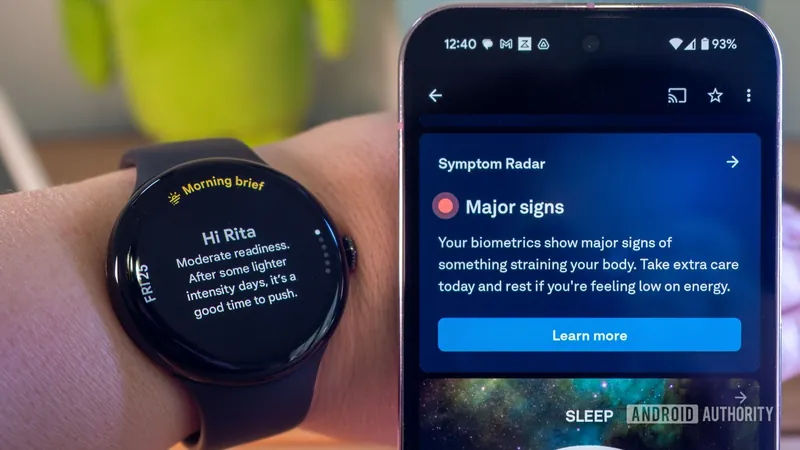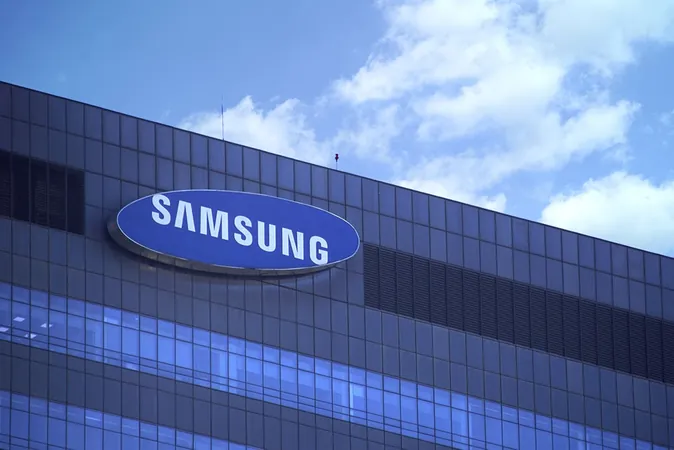
Sick and Shocked: My Experience with the Pixel Watch 3 vs. Oura Ring 4
2025-04-27
Author: Benjamin
Last Wednesday started like any other day, but I woke up feeling unusually unwell. Despite my efforts to shake off the grogginess, the fatigue clung to me like a heavy blanket. A day filled with work and 10,000 steps on my treadmill didn’t change that—getting up and down the stairs felt like running a marathon. By 4 PM, I was ready to call it a day, took a pain reliever, and hoped for a miraculous recovery.
The next morning, I felt worse and sweaty with chills. I contemplated using my Pixel 9 Pro and its built-in thermometer, but I knew from experience it isn’t effective for me. So, I turned to my Pixel Watch 3 and Oura Ring 4, both equipped with temperature sensors. To my surprise, the Oura Ring was way ahead of the game.
Oura Ring 4 to the Rescue!
Opening the Oura app, I found a shocking notification. The ’Major Signs’ alert indicated my body was seriously distressed, advising immediate rest. Intrigued, I dug deeper. My respiratory rate had spiked, and my body temperature was up by 1.1°C (2°F)—definitely not just in my head!
Even though my sleep and readiness scores seemed decent, the Oura Ring noticed I wasn’t at my best, adjusting my daily goals from a normal 8,500 steps down to a more manageable 5,500. It even suggested I activate Rest Mode—an encouragement to rest rather than exert myself further. This kind of thoughtful adjustment was more than impressive.
The Pixel Watch 3 and Fitbit: A Total Fail!
In stark contrast, my Pixel Watch 3 offered no compassion. While I was battling gastroenteritis, Fitbit buzzed with motivational messages urging me to push my limits. While Oura recommended rest, Fitbit declared, 'Ready to hit your targets today?' Seriously?!
Fitbit’s algorithms claimed my metrics were normal, ignoring the glaring reality of my situation. Even with heart rate variability dipping, Fitbit’s mentality resembled a relentless drill sergeant, insisting I keep up with targets despite clear signs of distress.
Why Oura Gets It Right and Fitbit Misses the Mark
This enlightening experience taught me a vital lesson: don’t blindly trust Fitbit’s metrics. The normal range is simply too broad and fails to recognize significant fluctuations. Oura, on the other hand, actively tracks historical data and any sharp changes, triggering alerts when something seems off. It’s all about context and recognition.
Missing a Key Feature in Oura Ring 4?
On a side note, one frustration I have with the Oura Ring is its lack of proactive notifications. I had to manually check the app for updates on my condition—something that should have been automatically communicated. Alerts about serious changes in my health would be immensely helpful and a much-needed feature.
While I’ll continue using Fitbit and the Pixel Watch for everyday tracking, I’ve learned a crucial lesson: when it comes to health and wellness, Oura Ring 4 emerged as the true ally during my sickness.
Oura Ring 4: The Smart Health Companion You Need!
With a sleek design and advanced health sensing capabilities, the Oura Ring 4 proves to be a worthy investment at $399. It’s more than just a stylish accessory; it’s a lifeline for those serious about monitoring their health.









 Brasil (PT)
Brasil (PT)
 Canada (EN)
Canada (EN)
 Chile (ES)
Chile (ES)
 Česko (CS)
Česko (CS)
 대한민국 (KO)
대한민국 (KO)
 España (ES)
España (ES)
 France (FR)
France (FR)
 Hong Kong (EN)
Hong Kong (EN)
 Italia (IT)
Italia (IT)
 日本 (JA)
日本 (JA)
 Magyarország (HU)
Magyarország (HU)
 Norge (NO)
Norge (NO)
 Polska (PL)
Polska (PL)
 Schweiz (DE)
Schweiz (DE)
 Singapore (EN)
Singapore (EN)
 Sverige (SV)
Sverige (SV)
 Suomi (FI)
Suomi (FI)
 Türkiye (TR)
Türkiye (TR)
 الإمارات العربية المتحدة (AR)
الإمارات العربية المتحدة (AR)